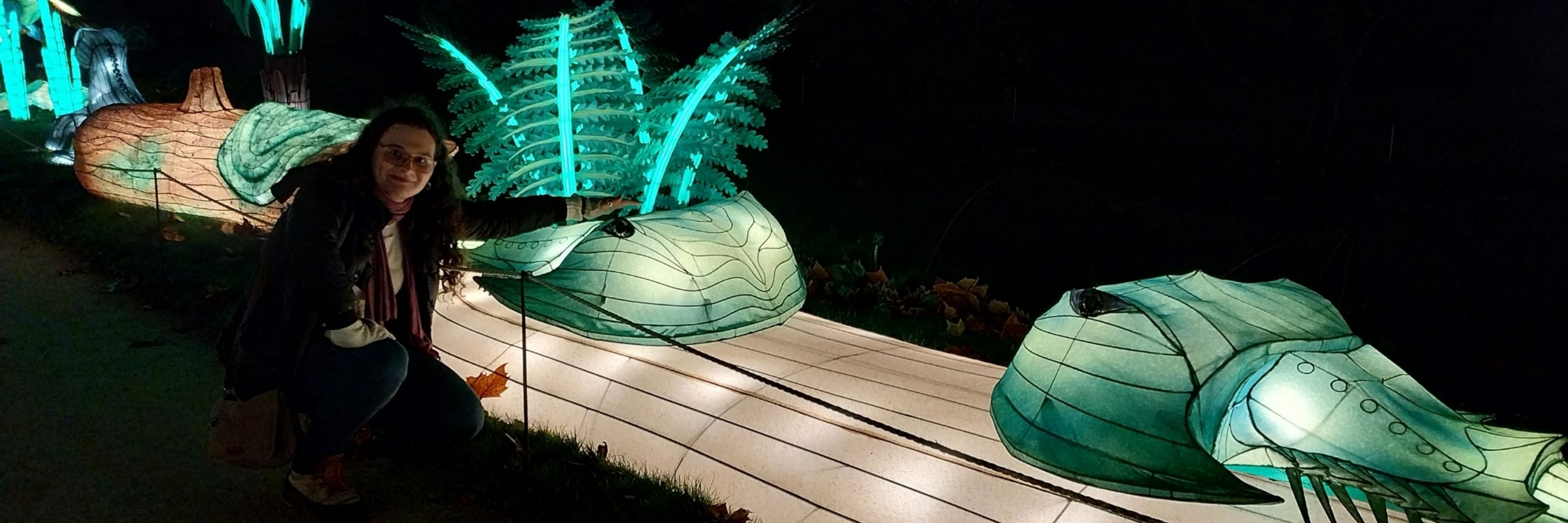
Paleontology MSc graduate, now science educator
Chelicerates lover🕷🦂❤ and inverts>verts , all living things are beautiful <3
Spec evo enjoyer
Superman stan
Elle/She🏳️⚧️ - Fr/En
And yup there's 3 made-up names (Opistholamellifera, Aflagellarachnida & Neophtalmarachnida), don't take them into account it was just for me😅

And yup there's 3 made-up names (Opistholamellifera, Aflagellarachnida & Neophtalmarachnida), don't take them into account it was just for me😅



Me right now : How the fuck only this few was enough to raise a genus

Me right now : How the fuck only this few was enough to raise a genus
Thanks to @lea-rtemis.bsky.social for the photoshoot, best birthday ever😊


Thanks to @lea-rtemis.bsky.social for the photoshoot, best birthday ever😊
"Dreams save us. Dreams lift us up and transform us into something better. And on my soul, I swear that until my dream of a world where dignity, honor and justice are the reality we all share, I'll never stop fighting. Ever."
-Superman




"Dreams save us. Dreams lift us up and transform us into something better. And on my soul, I swear that until my dream of a world where dignity, honor and justice are the reality we all share, I'll never stop fighting. Ever."
-Superman







Really, if you think dinosaurs are cool, I beg you to look at extinct crocs, they may not fly but some of them are really something !🐊

Really, if you think dinosaurs are cool, I beg you to look at extinct crocs, they may not fly but some of them are really something !🐊


We end the challenge with the oldest of the list ! This enigmatic eukaryote may be the oldest terrestrial life known, throwing the first water-land transitions way back into the precambrian, way before plants and animals !


We end the challenge with the oldest of the list ! This enigmatic eukaryote may be the oldest terrestrial life known, throwing the first water-land transitions way back into the precambrian, way before plants and animals !
Yes, it's a stegosaurian, not a sauropod. Miragaia is kinda special in its group for having at least 17 vertebrae in its neck, making it a really long-necked animal, even for stegosaurians.
it's a close relative of Dacentrurus & Alcovasaurus.


Yes, it's a stegosaurian, not a sauropod. Miragaia is kinda special in its group for having at least 17 vertebrae in its neck, making it a really long-necked animal, even for stegosaurians.
it's a close relative of Dacentrurus & Alcovasaurus.
Named after an ancient greek hero, this mollusk is a possible close relative of gastropods such as snails, slugs, nudibranchs and limpets. Numerous fossils of this animal have been found across paleozoic rocks but it's sometimes kind of a wastebasket taxon.


Named after an ancient greek hero, this mollusk is a possible close relative of gastropods such as snails, slugs, nudibranchs and limpets. Numerous fossils of this animal have been found across paleozoic rocks but it's sometimes kind of a wastebasket taxon.
Lovebirds are little parrots native from Africa well known for their strong pairbonding, and here's an extinct one ! This cutie lived in the Cradle of Humankind in the north of South Africa during the early pleistocene.


Lovebirds are little parrots native from Africa well known for their strong pairbonding, and here's an extinct one ! This cutie lived in the Cradle of Humankind in the north of South Africa during the early pleistocene.
Graptolites were marine colonial worms related to echinoderms (yes it's not one animal but many), and species such as these were major components of paleozoic food webs. They are especially abundant during the Ordovician and Silurian periods.


Graptolites were marine colonial worms related to echinoderms (yes it's not one animal but many), and species such as these were major components of paleozoic food webs. They are especially abundant during the Ordovician and Silurian periods.
This pelycosaur is a close relative of Dimetrodon (minus the sail), but interestingly it seems they never crossed paths and lived each on one side of an ancient sea, allowing these two to exist at the same time while occupying the same ecological niche.


This pelycosaur is a close relative of Dimetrodon (minus the sail), but interestingly it seems they never crossed paths and lived each on one side of an ancient sea, allowing these two to exist at the same time while occupying the same ecological niche.
Yes, it's from the cambrian, you were expecting something else? This improbable but tiny (4 mm) arthropod had a giant single eye at its front, the rest of the "head" comprising the 4 first pairs of appendages, and then swimming legs.


Yes, it's from the cambrian, you were expecting something else? This improbable but tiny (4 mm) arthropod had a giant single eye at its front, the rest of the "head" comprising the 4 first pairs of appendages, and then swimming legs.
Monitor lizards used to have a lot of large species in asia and oceania until the end of the pleistocene, like this komodo dragon lookalike (same size and general anatomy) that lived in india during the pliocene alongside animals like Sivatherium.


Monitor lizards used to have a lot of large species in asia and oceania until the end of the pleistocene, like this komodo dragon lookalike (same size and general anatomy) that lived in india during the pliocene alongside animals like Sivatherium.
Rhinoceros beetles not only include some of the largest beetles today, but also the largest fossil one ! This (maybe) fossorial behemoth reached around 5cm in length
Thanks to the dynaste queen @djigr.bsky.social for the tips on beetle anatomy <3


Rhinoceros beetles not only include some of the largest beetles today, but also the largest fossil one ! This (maybe) fossorial behemoth reached around 5cm in length
Thanks to the dynaste queen @djigr.bsky.social for the tips on beetle anatomy <3
Canids were super diverse in the past, especially in north america's miocene where they occupied numerous ecological niches before the arrival of other carnivorans. Epicyon for example is the biggest canid of all time and was durophagous, like a hyena.


Canids were super diverse in the past, especially in north america's miocene where they occupied numerous ecological niches before the arrival of other carnivorans. Epicyon for example is the biggest canid of all time and was durophagous, like a hyena.

